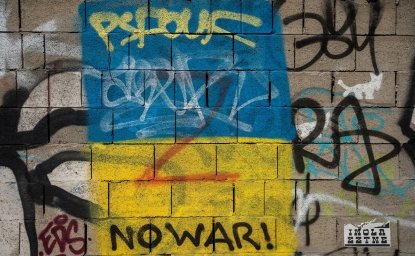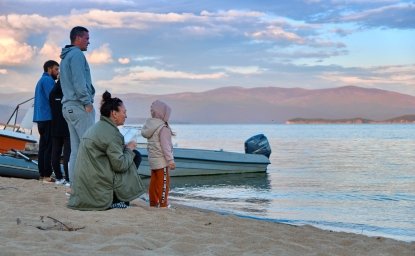
St. Michael’s is the centuries-old, brilliant blue, golden-domed monastery you see over the shoulder of western journalists when they broadcast to the world from Kyiv, Ukraine. It holds special meaning for me because of what was going on in Ukraine during my visits there.
In 2014, I served as an observer for the country’s first elections after the Revolution of Dignity. In those days, the streets of Kyiv still bore the ugly evidence of the brutal crackdown by pro-Kremlin President Viktor Yanukovych against crowds of peaceful protesters. In the road leading up to St. Michael’s, bullet-riddled lampposts were adorned with flower wreaths, marking where protesters had tried in vain to hide from government forces.
Several months after those events, several makeshift barricades of plywood and rubble thrown together to stop or slow down military-style vehicles sent in to attack the crowds remained intact. Added to their ranks were clusters of sandbag-lined tents, set up and occupied by remnants of the protestors—just in case pro-Kremlin forces tried to return. There were even small cooking areas staffed by Ukrainian women, who took turns feeding protestors so they could stay at their posts around the clock.
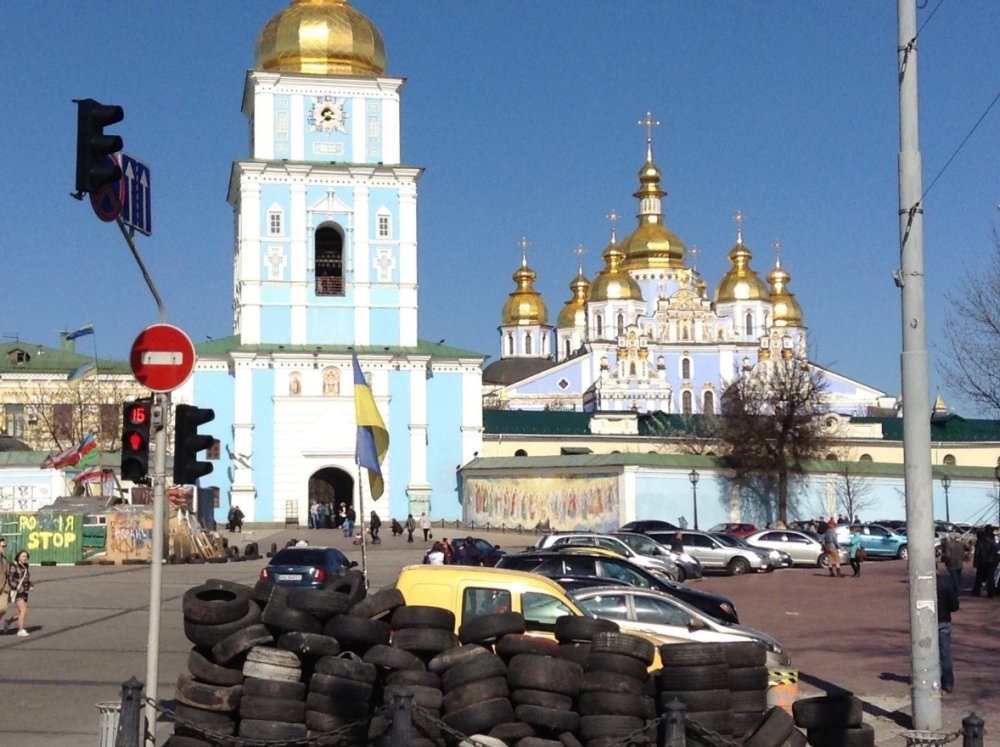
While some of the tents and barricades had crept onto the grounds of St. Michael's, the golden domes of the monastery shone brightly, as if to say that despite the attacks and brutality, Ukraine—its extraordinary history, character, and culture—was unbowed. As I witnessed Ukraine’s democratic renewal, I remember vowing to myself that I would come back some day. That I would return to the grounds of St. Michael’s, and see it in all its glory—once again free of the ugly scars of authoritarian crackdown.
Ten years later, I had my chance.
In early February 2024, I revisited Ukraine as part of a delegation led by UNHCR, the Refugee Agency. Over the course of a week, we traveled some 1,300 miles around the country, including to places like Kherson and Kharkiv, Dnipro and Odesa, where one saw boundless evidence of Putin's brutal attacks and bombardment. We also saw uplifting signs of humanitarian assistance from the US and Europe, and the work UNHCR was doing to help those in need.

Near the end of our journey, we stopped in Kyiv, and I got my chance to revisit beautiful St. Michael’s. The monastery grounds were free of those tents and barricades I saw ten years earlier, and the golden domes were shining as brightly as ever.
As I approached the front entrance, I ran into a man in camouflaged fatigues, smoking a cigarette, and passing out bracelets in the blue and yellow of Ukraine’s flag. He gave me a bracelet, and after I passed him a small donation, he began to talk about his time fighting for his country. He rolled up a sleeve and showed me the scars of bullet wounds he received in skirmishes near Bucha —where so many were tortured and killed by the Russians.
Recognizing that I was an American, he asked me very softly whether America would continue to “stand with Ukraine.” I paused and answered, “I think so.” He responded with a deep sigh.
In the last 10 years, Ukraine has emerged from the darkness of Russian influence to build a vibrant, if still nascent, democracy. Kyiv is a wonderful cosmopolitan city, and its links with Europe are all around. While the grounds of St. Michael's and the Kyiv of today may not be lined with barricades and tents, as that soldier could attest, authoritarian forces are once again trying to snuff out democracy.
I believe I was right when I told him that America would continue to stand with Ukraine. I hope so.
Author
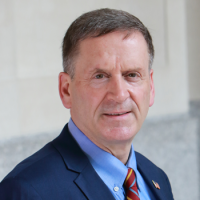
Explore More
Browse Insights & Analysis
Infographic | Russia's Illegal Annexation of Crimea
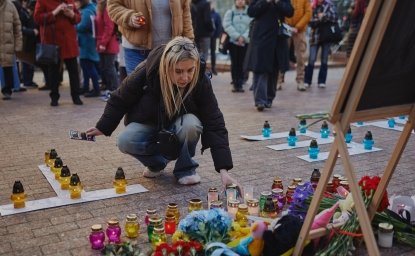
Talking to the Dead to Heal the Living
